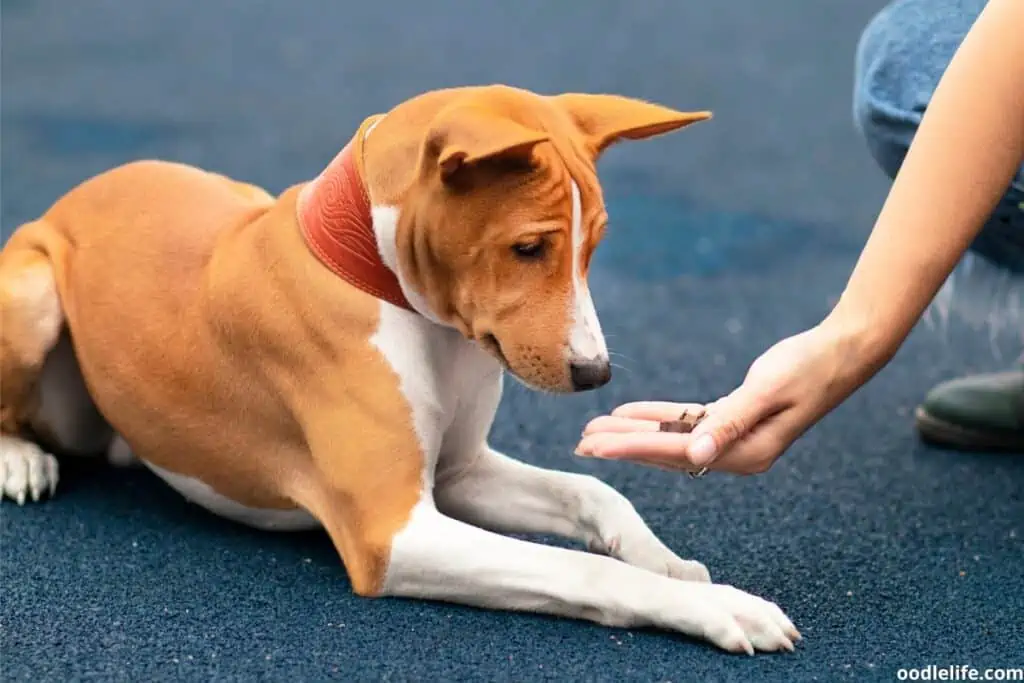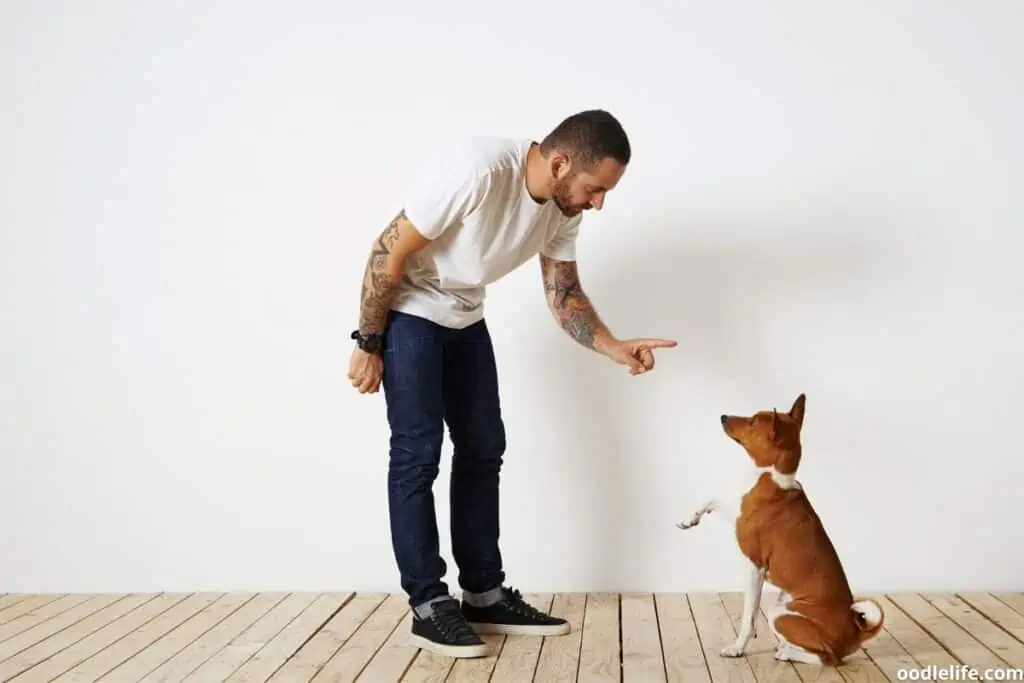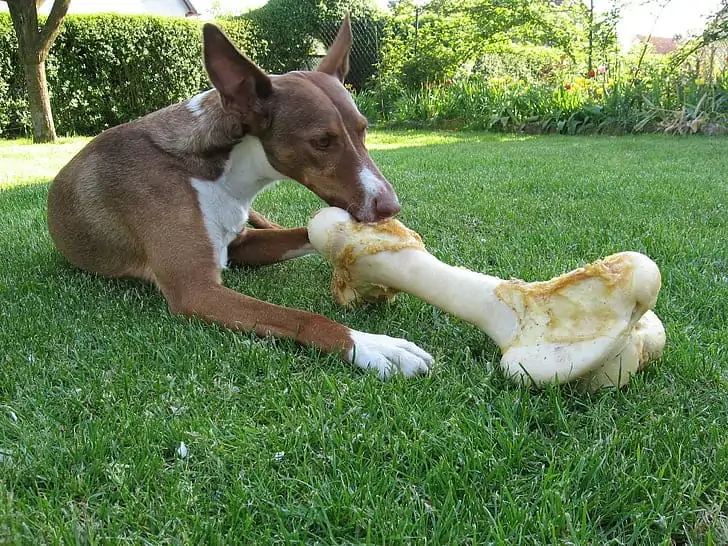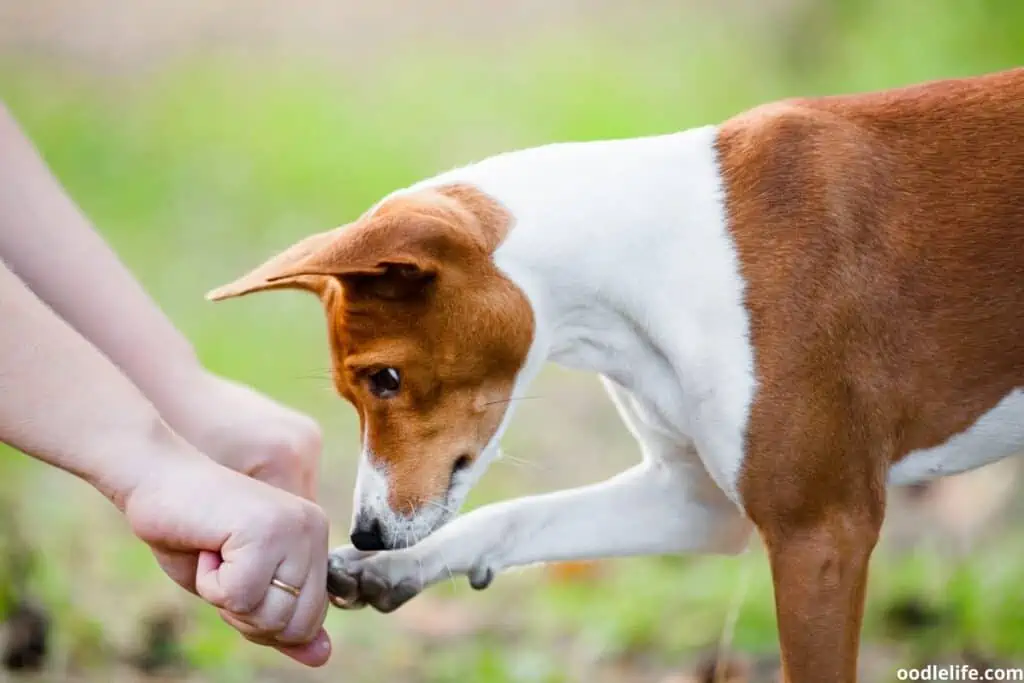How Much Should A Basenji Eat? (Feeding Guide)
Sometimes my Basenji is a picky eater – but at other time he INHALES food so fast I worry he might burst.
Sure Basenjis are really agile dogs that are very active. But have you ever asked yourself “how much should a Basenji eat”? As a dog owner, you want to make sure that your basenji is not over or underfed but just enough to ensure that they are healthy.
Basenjis need to be fed twice a day at the most. They are active animals who are used to a lot of activity in their day-to-day lives. When your Basenji is overweight, there are a lot of negative health issues that can arise and you need to be able to keep on top of them.

Just like you and I, your Basenji needs to have a healthy and balanced diet. They need to be fed at the right intervals and at the right times. The age of your Basenji also plays a big part in what they should eat, how often they eat, and how much food quantities they should eat.
What Do Basenjis Eat?

Basenjis primarily eat meat with a lesser amount of vegetables. They generally don’t like dry food so it is important to mix it up a little. Basenjis can occasionally eat left-over food from your table but it is not recommended.
It is best to avoid giving your Basenji human food. Feeding them cooked meat bones from pork, chicken, and fish is not recommended. These can get lodged in the intestines or even puncture them. You need to keep your Basenji from foods that contain onions.
Onions are toxic for your basenji and every other dog for that matter. If your basenji eats them, they will get really sick and if they eat too much, they will die. You need to make sure that they steer clear of any food with onions.
Other foods to keep away from your Basenjis include, coffee, grapes, raisins, spoiled food, avocadoes, chocolate, macadamia nuts, fatty foods, and alcohol. Alcohol can actually kill your dog. Never give it to them.
How to Tell Whether a Basenji is under or Over Fed
What are the signs that your Basenji is over-fed? One of the main things that show that your dog is over-fed is when you begin to see fatty folds on their chest, neck area, and the upper parts of their legs. When you begin to notice this, it’s time to reduce the amount of food you are feeding your Basenji.
On the other hand, you can tell that your Basenji is underfed when you begin to see their ribs. A test you can do is place your hands on both sides of the rib cage. You should not be able to see the ribs but you must be able to feel when you hold the sides.
If you struggle to feel them, it may suggest that your Basenji is over eight and you need to limit the food that your Basenji is eating.

How Much Should Basenji Puppies Eat?
To get the proper amount of food that your Basenji should eat, you need to consult with your vet. The amounts of food that you give your Basenji will vary depending on the size and age of your Basenji.
As for the number of times that your Basenji should eat, they must be fed two or three times a day in the early stages. This is a good frequency because they are growing and need to supply their growing bodies with enough food.
Even at this stage though, caution needs to be exercised to avoid overfeeding them leading to obesity.
How Much Should Adult Basenjis Eat?

Adult Basenjis should be fed twice a day or, alternatively, one full meal and some snacks during the course of the day. Make sure to throw in a lot of exercise as well. Basenjis require at least 40 minutes of exercise per day.
If you neglect to exercise them during the course of each day, they end up being restless and look for other ways to release that pent up energy. One of the ways they will do this is to make a mess in the house.
How often should you feed your Basenji raw meat? It’s not necessary nor advisable to feed your dog raw meat every day. Even when in the wild, Basenjis will not eat raw meat daily. You need to limit this to once in every while.

Results of OverFeeding Your Basenji
What are the negative implications of overfeeding your Basenji? Excess weight will impact the joints and bones of your Basenji. Your dog can get obese and this will, in turn, cause heart problems.
Hip dysplasia is a common problem in dogs and Basenjis are no exception.
It is a condition that causes you Basenji a lot of pain and if left untreated can end up leading to arthritis. Being overweight doesn’t necessarily cause it but it will greatly compound the situation because the hips have to support more weight.
A basenji is a small dog and its frame makes it easier for them to gain weight. Always be watchful of the amount of food you are giving them. If they gain weight, you need to cut back on the food you are giving them.
Results of Under Feeding Your Basenji
When you underfeed your Basenji, they can get malnourished leading to weight loss and other related ailments. If you see the ribs on your Basenji showing, it is a definite sign that our Basenji is grossly underweight and needs to be given more food.
When you see this happening, you need to make sure that you increase the amount of food or the frequency with which you feed them. This food increase needs to be monitored regularly in order to make sure that your basenji doesn’t get overweight again.

Conclusion
How much food you feed your Basenji is dependent on your B’s age and size. When they are still puppies and on solids, you can feed them two, three, or four times per day. You need to make sure that you are not overfeeding them by watching that they do not become overweight.
Being overweight at this developmental phase in their lives will put a lot of pressure on their joints and bones because they won’t be as strong as in an adult Basenji.
For adult Basenjis, you need to feed them at most twice a day. Ideally, you should feed them one full meal and some snacks during the course of the day. Make sure to get your Basenji to exercise for at least 40 minutes per day to keep their bodies in top shape.
If you are not sure about the quantities that you need to feed your Basenji, please consult your vet or local shelter.